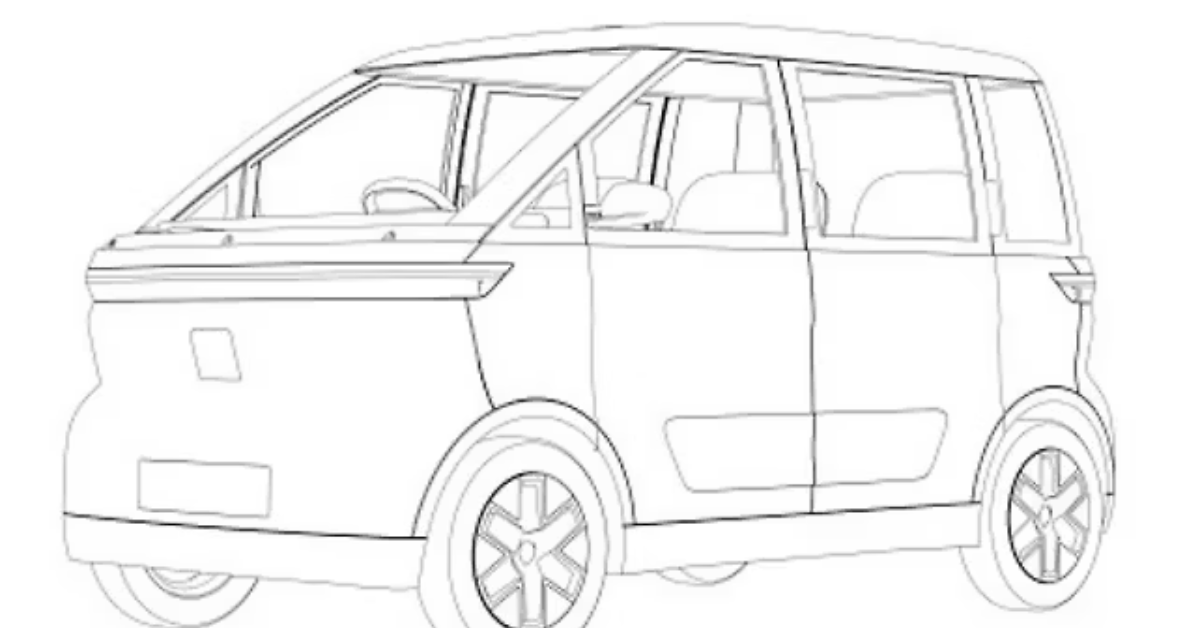Ola Electric has taken yet another bold step in its aggressive expansion strategy by patenting a brand-new compact electric car. This patent filing has sparked excitement across the automotive world, as it hints at Ola’s ambition to move beyond scooters and enter the most challenging yet rewarding segment—the mass-market budget EV space. The big question is: Will Ola Electric’s compact car succeed in India’s competitive automotive market?
As India rapidly shifts towards electric mobility, a small, affordable, and efficient EV could prove to be a game changer. However, building a compact EV that is both reliable and cost-effective is no easy task. Let’s take a detailed look at what this patent reveals, Ola’s possible strategy, market challenges, and its chances of success.
✅ 1. What Does the Patent Reveal About the Ola Compact EV?
The patent shows a design that is clearly meant for a compact, city-friendly car that focuses on practicality, efficiency, and affordability. While the patent images do not reveal complete details, the overall structure suggests:
- A minimalist and aerodynamic body
- Short front and rear overhangs for maximum cabin space
- A tall-ish stance for better headroom
- Simple front fascia likely optimized for cost
- Small wheels suited for urban mobility
- A two-box layout typical of compact hatchbacks
The design strongly hints at a modern, practical, and functional EV built for crowded Indian cities, where compactness and ease of use matter more than aggressive styling.
This is very different from Ola’s previously showcased futuristic car concepts. Instead, it looks like Ola may be targeting the mainstream affordable EV buyer.
✅ 2. Why a Compact EV Makes Sense for Ola Electric
Ola entered the EV space with scooters and quickly became one of the leaders in India’s electric two-wheeler market. Affordable electric mobility is Ola’s core strength, and a compact car aligns perfectly with its brand identity.
Here’s why a compact EV is a logical next step:
✅ 1. India’s Demand for Small Cars Is Huge
Most Indian families still prefer small cars because they are affordable, easy to park, and fuel-efficient.
✅ 2. EV Affordability Is the Key to Mass Adoption
A compact EV priced at ₹5–8 lakh could accelerate EV adoption more than premium electric SUVs.
✅ 3. Rising Fuel Costs Encourage EV Shift
A small electric car with low running costs can attract millions of cost-conscious buyers.
✅ 4. Ola’s Digital Ecosystem Offers an Advantage
With an existing network of chargers, software capability, and mobility experience, Ola can integrate apps, OTA updates, and connected features seamlessly.
If executed well, this compact EV could position Ola as a major disruptor in the four-wheeler market, just like it did with scooters.
✅ 3. Possible Features Ola’s Compact EV Might Offer
While the patent reveals the exterior structure, expected features based on Ola’s brand DNA and market expectations may include:
Likely Features:
- Compact and lightweight body for maximum efficiency
- Minimalist interior with a large central touchscreen
- AI-driven digital interface
- Connected car features
- Good boot space for a small family
- Two or four-door configuration depending on design
- Fast charging support
- Range between 180–250 km for city use
- Affordable maintenance
Since Ola is known for bold feature-rich products, the compact car may come with modern software-based features even in a budget model.
✅ 4. Expected Powertrain & Performance
A compact EV will likely focus on efficiency rather than high performance.
Expected powertrain details:
- Small battery pack (20–30 kWh)
- Range suitable for city commutes
- Single electric motor
- Top speed around 80–100 km/h
- Regenerative braking
- LFP battery chemistry to keep costs low
Ola may also offer multiple variants with different ranges to appeal to broader customers.
✅ 5. Expected Pricing Strategy
Pricing will play a critical role in the success of Ola’s compact EV. India is extremely price-sensitive, especially in the small car segment.
Possible price range:
- ₹6.5 lakh – ₹9.5 lakh (ex-showroom)
If Ola can price it aggressively, it could become a strong alternative to:
- Maruti WagonR
- Tata Tiago
- Hyundai i10
- Tata Tiago EV
- MG Comet EV
Given Ola’s low-cost manufacturing strategy and focus on localization, an affordable price tag is entirely possible.
✅ 6. Challenges Ola Will Face
While the concept is promising, there are several challenges Ola Electric must overcome to ensure its success.
✅ 1. Reliability Concerns
Ola scooters initially faced quality issues. A car demands even higher reliability standards.
✅ 2. Safety Requirements
Cars must meet strict crash testing norms, something that demands advanced engineering.
✅ 3. EV Battery Cost
Even with localization, battery prices remain high. Maintaining affordability will be difficult.
✅ 4. Competition Is Already Strong
Tata Motors dominates India’s EV market with Tiago EV and Punch EV. Competing with Tata’s network, trust, and product quality will be tough.
✅ 5. Charging Infrastructure
Although improving, EV charging infrastructure in India is still limited, especially in smaller towns.
✅ 6. Production Scale & Delays
Large-scale car manufacturing requires precision and capital. Ola’s scooter production delays may be repeated unless processes improve.
Ola must overcome these challenges to gain public trust and compete effectively.
✅ 7. Will Ola’s Compact EV Succeed in India?
Success depends on several factors:
✅ **1. Affordability
If Ola manages to price the car under ₹8 lakh, it could easily disrupt the market.
✅ **2. Range & Reliability
A real-world range of 180–250 km with minimal issues would attract city car buyers.
✅ **3. Safety
High crash-test ratings will be essential for family buyers.
✅ **4. Features & Technology
Ola is known for modern, software-driven vehicles. If the car offers value and features, it will impress younger buyers.
✅ **5. After-Sales Support
Strong service network and low maintenance costs are crucial for long-term success.
If Ola focuses on quality and long-term support—areas where customers still have questions—the compact EV has strong potential.
✅ 8. Final Verdict: A High-Potential Product If Executed Well
Ola Electric’s patent for a compact car shows that the company is aiming for the heart of India’s automotive market—small, affordable urban cars. It is a bold, ambitious, and potentially game-changing move.
The formula for success is simple:
- Keep the price low
- Offer good range
- Focus on quality & safety
- Provide strong service support
If Ola can deliver all these, the compact EV might not just succeed—it could redefine the electric car market just like the Ola S1 did for electric scooters.
All eyes are now on Ola Electric’s next steps, and India’s EV future might get a lot more exciting very soon.



